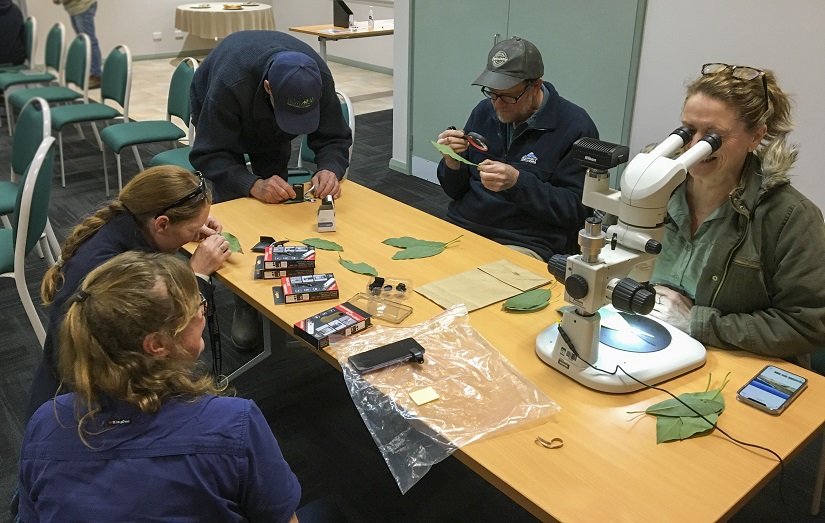
A research project is helping Western Australia’s growing avocado industry to minimise the impact of a tiny pest on fruit quality and orchard production.
The Department of Primary Industries and Regional Development (DPIRD) is in the final year of the three year project to examine how best to manage six spotted mite, funded by Hort Innovation.
The findings so far were shared with South West growers at a workshop at Manjimup this week.
Six spotted mite, which is also a pest of grapevines, is only considered a pest of avocados in the lower south west of WA and New Zealand.
The pest feeds on the foliage of avocado trees and, in higher numbers, causes the plant to shed its leaves and expose the fruit to sunburn – compromising quality, value and growers’ returns.
Department research scientist Alison Mathews said the research had already produced some useful insights that would assist the development of an Integrated Pest Management program.
“Very little is known about how six spotted mite performs in avocados so some fundamental research is required to get a better understanding of this pest,” she said.
“This includes when and how to monitor for them and best management practices for different times of year.
“We know that they are most active in spring, when defoliation is most likely to occur, making it a critical time for growers to be out in their orchards monitoring for mites.”
A key focus of the project has been developing suitable crop monitoring practices to help develop guidelines for treatment.
Ms Mathews told the workshop one of the key learnings from the research was the variability in the distribution of the pest, not only between properties but also within orchards.
“Mites are very small and this makes the way you monitor them very important,” she said.
“It’s critical to manage different blocks within an orchard as separate units, if possible.
“It is advised to get a collection of leaves from multiple trees in a block, picking those that are recently matured.
“Mites are very adept at developing resistance and we’ve also seen that they peak in different orchards at different times – if at all – so it’s important to regularly monitor and only manage them if the numbers justify it.”
While there are treatment options registered to control six spotted mite, beneficial predatory mites were also assessed as part of the project.
“We have undertaken case studies to assess when, where and how to treat most effectively,” Ms Mathews said.
At the end of the project next year, a management package for six spotted mite in avocados will be formulated to assist avocado growers to protect their orchards from the pest and optimise production margins.
Six-spotted mite can be distinguished from other mites found on avocado leaves using a hand held magnifying lens.
The pest can be found on the underside of leaves, measures about 0.3 millimetres in length are pale yellow to greenish in colour and – despite the name – do not always have six spots but feature dark markings that vary considerably between individuals.
Avocado production is now Western Australia’s biggest and fastest growing fruit industry, with 33,239 tonnes produced in 2019-20, worth $207 million, from orchards in Pemberton, Manjimup, Busselton, Wanneroo and Gingin.
About two thirds of WA avocado orchards are at full production age with the remainder consisting of young trees that will begin to contribute in the next few years to the production of avocados in WA.
For more information about avocados in WA and DPIRD’s research visit the department’s website and search for ‘avocados in western australia’.
Caption: South West avocado growers got some hands on experience using a number of monitoring tools to identify the pest six-spotted mite at a recent DPIRD workshop at Manjimup.



